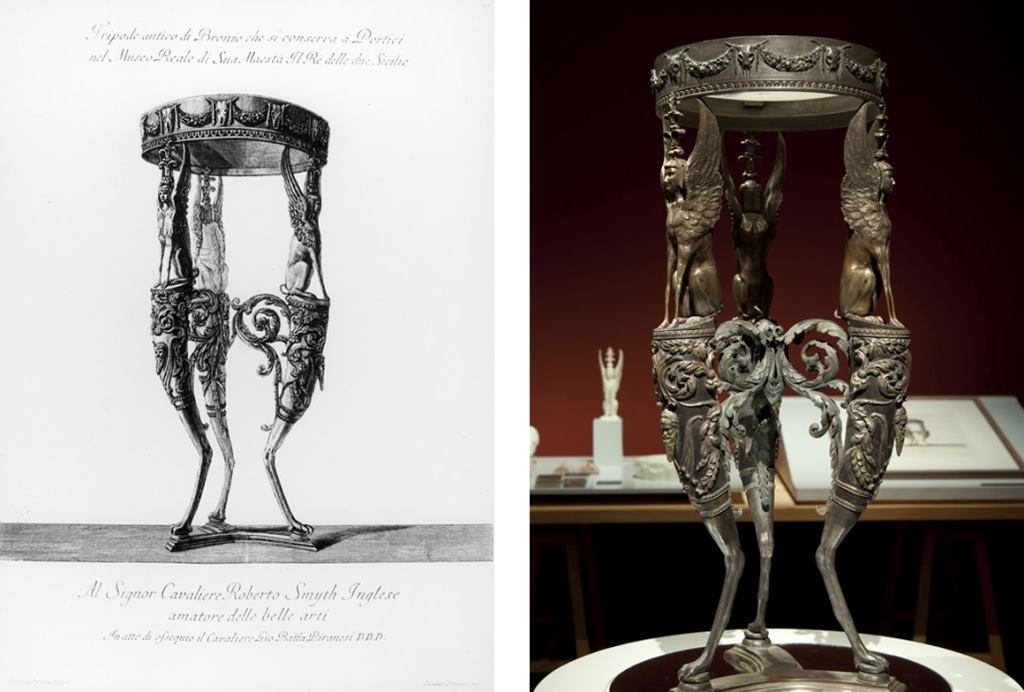Art historians, museum curators, and more are using 3D printing and other digital fabrication technologies to bring the past to life, allowing for the detailed study and replication of historical, and often two-dimensional, images and artifacts.
In an exhibit at Sir John Soane’s Museum in London featuring the decorative works of Giovanni Battista Piranesi, eight designs that previously existed in two dimensions on paper are manifest in three dimensions in silver, bronze, and gilded resin. The remarkable transformation was made possible by Factum Arte, a Madrid-based studio of artists and technicians that investigate the role of digital tools in art conservation.
To execute this task, Factum Arte constructed meticulous digital models based on Piranesi’s drawings, inferring depth and three-dimensional queues implied by the artist’s use of perspective, shadows, and depth-of-field techniques. The team then used digital fabrication methods such as 3D printing, stereo-lithography, milling, and fused deposition modeling to construct the physical artifacts in the materials that Piranesi himself specified. The objects on display at the Soane include bronze tripods, a coffeepot, a vase, a candelabra, a chair, and a marble chimney.
Factum Arte’s achievement represents a significant milestone in the field of art conservation, adding an unprecedented capacity to embody historical designs that never before had physical form. These objects will no doubt be subjected to the full scrutiny of the art history community. Still, their physical realization ushers in a new and profound approach by which we may better understand and evaluate visions from the past.
The exhibit, “Diverse Maniere: Piranesi, Fantasy and Excess“, is on view at the Soane Museum through May 31.
Blaine Brownell, AIA, is a regularly featured columnist whose stories appear on this website each week. His views and conclusions are not necessarily those of ARCHITECT magazine nor of the American Institute of Architects.
Image courtesy Factum Arte.
